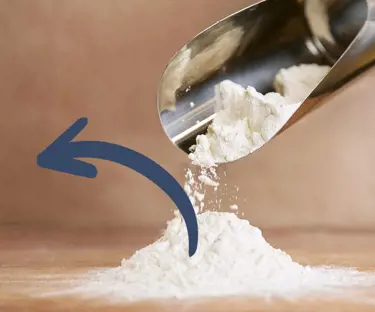The bakery industry has faced its share of challenges in recent times as consumers call for healthier, all natural and allergen-free options. Bakers have risen to meet these new demands in many different ways, most markedly in the production of gluten-free goods. Now, however, the growing potential of high-protein products is also being explored in product development departments around the world.
Protein in favor
The North American market is currently leading the push toward higher protein levels in a wide variety of foods, largely thanks to the popularity of no or low carbohydrate diets and the relative affordability of enhanced foods for US consumers – but also to growing awareness of the importance of obtaining sufficient protein in the diet.
The contexts for high-protein products reflect the changing lifestyles and nutritional needs of the region’s population. Today’s consumers live in a demanding, fast-paced world where many food decisions are made on the run. Time-poor and stressed, they often turn to indulgent foods to help them cope. Cakes, muffins, snack bars and pastries, for example, are traditional favorites, but how can such tasty snacks be improved by adding more protein, for example? How can they be made healthier and more convenient? And more cost-effective to produce at the same time?
Tapping into potential
Dairy-sourced ingredients have a lot to offer the baking industry. According to data from Innova Market Insights, whey permeate, for example, (an ingredient derived from whey) was instrumental in 18% of all new product launches in 2014 alone. And Vikki Nicholson of the US Dairy Export Council says US suppliers have invested in research and development activities, revealing the sensory, functional and nutritional benefits of whey and milk permeates as cost-saving, flavour-enhancing ingredients. But whey protein itself holds just as much promise.
Next-generation bread
A mainstay of the baking industry, bread’s reputation has suffered in recent years. Driving the change in sentiment, again, is the number following no or low carbohydrate diets, coupled with a hunger for gluten-free products. Now, with the consumer acceptance of increased protein as a health-enhancing choice, bread makers are increasingly producing protein-enriched breads, too.
To do it, manufacturers are adding whey, soy or pulse protein. And by doing so, they can raise the nutritional profile of breads and similar baked goods to address issues such as satiety, weight management, muscle building, sarcopenia and muscle recovery.
Whey protein replaces gluten
There’s much more to the story of protein in the baking industry, however, moving beyond nutritional aspects to texture, mouthfeel and cost-effective production.
For example, protein’s primary functional role in bread is to provide structure, texture and volume. It’s important not to compromise on these aspects, as consumer perception of product freshness and quality relies heavily on such characteristics. Gluten has traditionally played the role of providing this structure, but, with the growing popularity of gluten-free products, proteins such as whey are helping to achieve the same properties. In fact, whey protein can offer a variety of other benefits for breads, too, including improved handling and stability of batter or dough, desirable crust browning and enhanced yeast fermentation.
Replacing eggs
Another successful bakery trend, one that benefits the production side of the equation, is that of using whey protein to replace egg protein in cakes and other recipes. Why might this be useful? One reason is unpredictable price fluctuations in the global egg industry due, for example, to avian flu outbreaks and contamination with fertilisers.
Such phenomena present an ongoing cost burden for food manufacturers. Moreover, bakery products that are egg-free can be lower in saturated fat and cholesterol than their traditional counterparts. And, given the functional properties of whey protein, the final product may even achieve improved structure, moistness, stability and shelf life, too, not to mention reduced salt.
Filling the gap
Last but by no means least, high-protein baked snack bars are an emerging category that holds plenty of promise for bakers. They’re ideal for filling in gaps between meals or even for replacing them entirely when the action is on. And they are an easy alternative for millions of athletes and sports hobbyists who are used to chewing on protein bars of various kinds. In 2016, the global high protein bars market (including baked products) was valued at USD 469 million** and this could be expected to continue to grow, fuelling parallel growth in baked versions.
Millennials and the generations close on their heels want healthy and convenient options, and protein-enriched bakery products are helping to ensure the industry can remain on trend to meet the needs of these busy, health-conscious consumers, yet still provide the dietary staples and indulgent treats the majority of people have grown to love.
*Global Industry Analysts Incorporated, July 2017
**Mordor Intelligence, February 2018
This blog contains material and information intended for B2B customers, suppliers and distributors, and is not intended as information to the final consumers.


